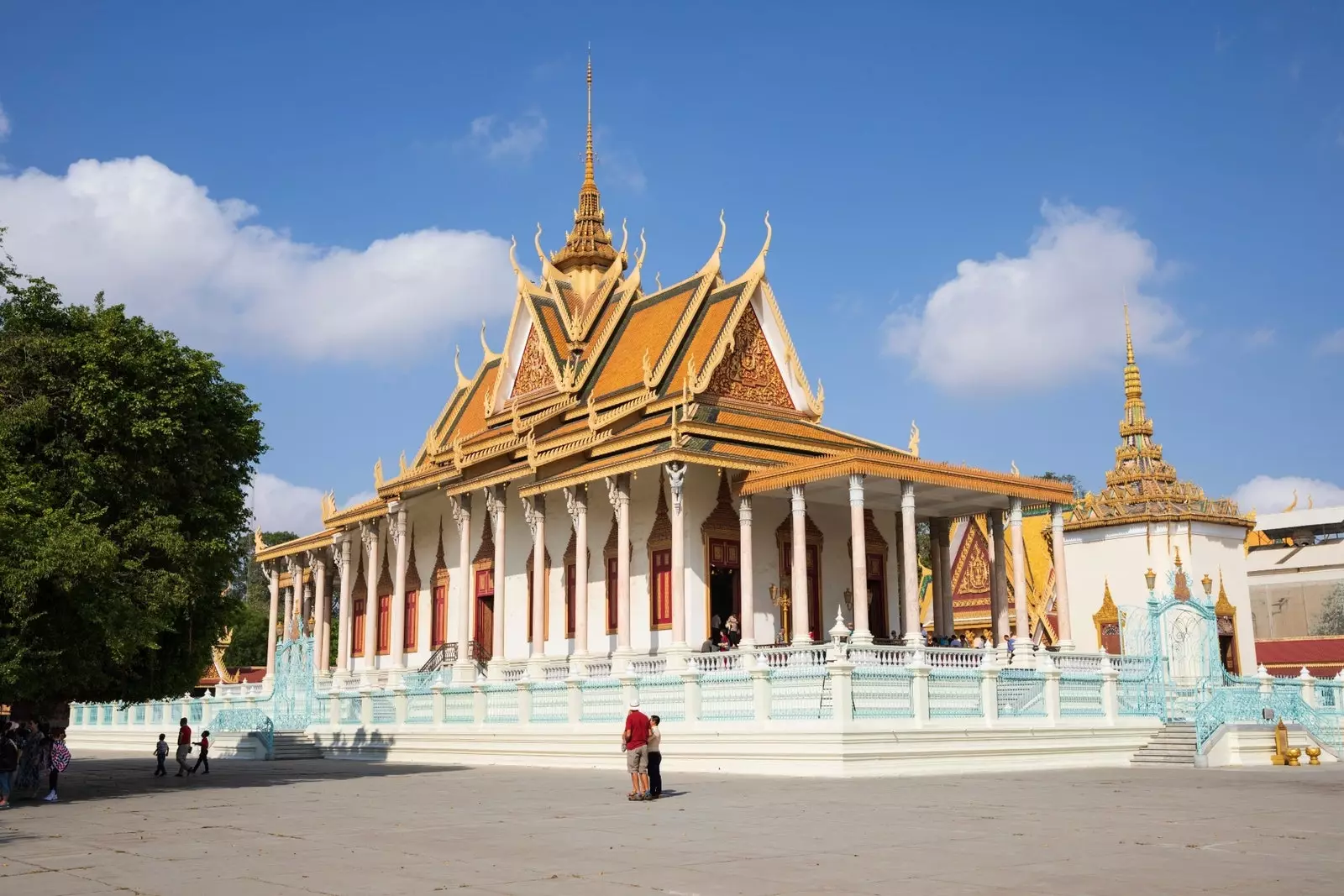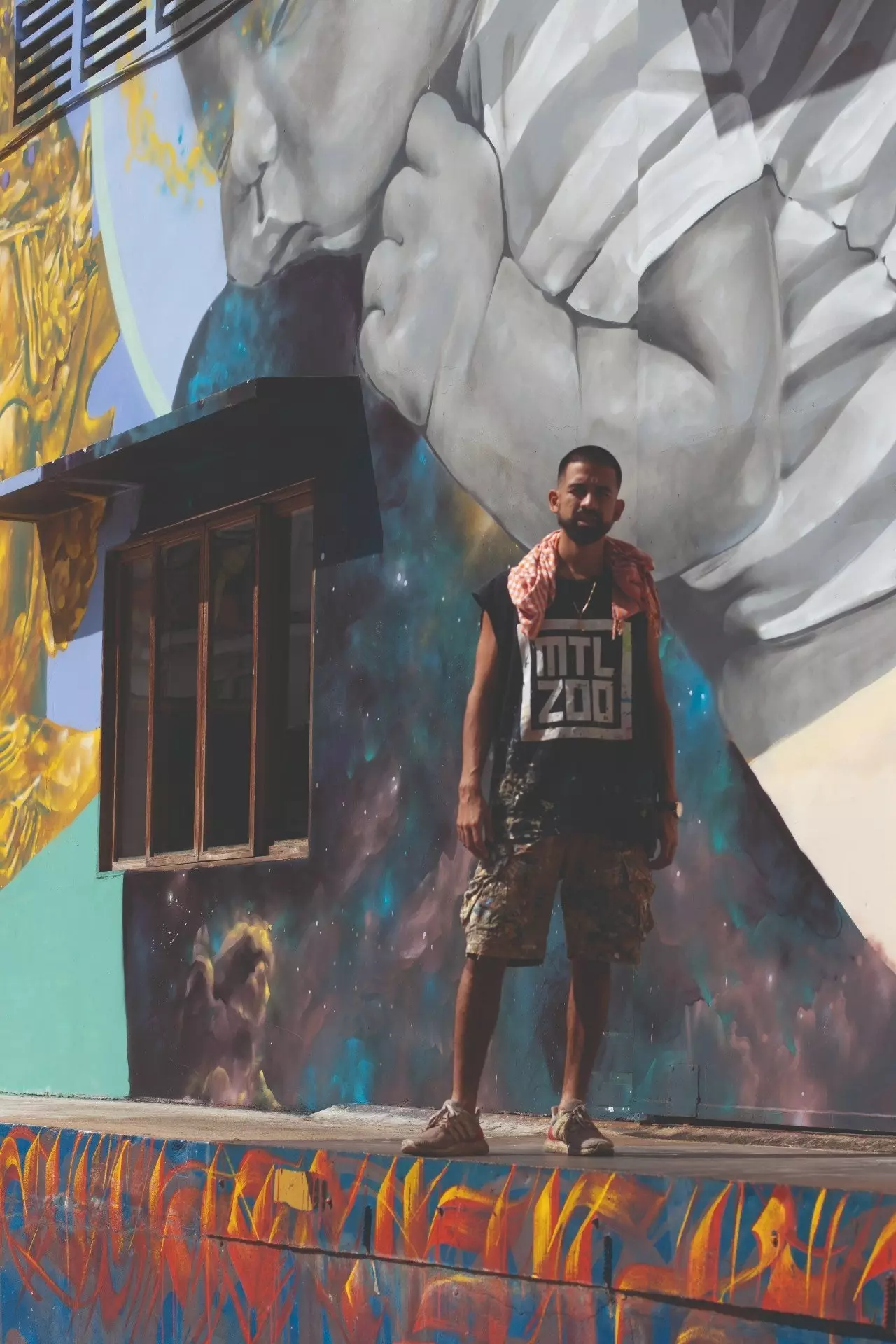
Phnom Penh Royal Palace
Canadian-born FONKi's family is part of the Cambodian diaspora who fled the country during the Khmer Rouge's reign of terror in 1970. Fonki, already a acclaimed street artist in Montreal, traveled several times to Phnom Penh, attracted by its creative renaissance and by the desire to understand the country for himself, before settling there for a while.
FONKi's street art is a fascinating introduction to Cambodian history and culture : incorporates architectural motifs, traditional scripts and legends, both in large-scale works such as portraits In addition to making movies and paint on canvas.
This interview is part of "The World Made Local", a comprehensive project Conde Nast Traveler in the seven international editions, which gives voice to 100 people in 100 countries to discover why their own territory should be your next destination.
How is the contemporary art scene in Phnom Penh?
Cambodia's art scene took a long time to recover - a whole generation of artists was wiped out in the 1970s - but now more than 70% of the population is under 30 years old, so it is a young country.
Furthermore, part of the diaspora is investing in art and hotels. When I studied art, I thought that everything was done, that I was born in the wrong generation, but when I got here there was a real sense of enthusiasm. I'm too involved in FT Gallery & Studio , an industrial building converted into a **hub for Phom Penh artists. **
There is also the Sa Sa Art collective, born here, who has been active for a decade. Among the artists to watch out for are Sopheap Pich, Vuth Lyno, from the Sra'Art gallery, and Lisa Mam and Peap Tarr, the first street artists of the city. In Battambang there is Romcheik 5, which shows many sculptures, and in Siem Reap there is Open Studio.

The urban artist FONKi
How did the creative universe deal with the pandemic?
It was interesting to see the support from the various art galleries over the past year. A young photographer teamed up with the cycling community -the rickshaws , which circulate through the streets from the 30s- to raise funds for the inhabitants of the area; artists sold works in an initiative created under the motto of "local-for-local".
Where do you find inspiration?
Siem Reap it's like a ghost town right now, because it's based a lot on tourism; I remember the first time I visited when I was four years old and no one was there. are still discovered artifacts, temples and many objects that were looted during the colonial era and that are being giving back to the country's museums.
In my work I have used khmer statues and I have delved into the stories behind; the whole region (with Burma and Thailand) is very rich and is very culturally connected.
In Phnom Penh there are also the Wat Phum and Wat Bottum pagodas , next to Royal Palace , but sometimes I go out of the city to the Silk Island , which is about 20 minutes away, in the mekong , for its pagodas and Buddhist ruins. And back to the city, the Olympic Stadium and the National Museum, both designed by architect Van Molyvann during Cambodia's Golden Age in the 1960s.
A place to eat and drink?
To enjoy that homey atmosphere, I take my friends to the Sovanna barbecue 1 and 2 : with its classic plastic chairs and local beef and fish on the menu. It asks for a lot of fried rice to accompany.
For a trip back in time there's the Khmer Surin with its wood paneled walls, or Pleng Chan for a cozy local cafe. Traditionally, most people drink beer in Cambodia, and it's everywhere -durian beer-, but now there is more drinking culture, with Cambodian-made rum and gin.
The Pearl Bar it's a cool new venue run by 20-somethings; there are also many in Bassac Lane -I like Le Boutier-. If you want to enjoy the tropical vibes, head to the Elephant Bar, at Le Royal.
Where do you go to escape the city?
Traditionally, Sinoukville, on the coast, was the perfect getaway , but nowadays it has too much attention. Kamput is quieter ; is where people go kayak and you have mangroves and mountains close.
to the west is Bokor, where I used to go a lot to paint: all those old royal residences and houses by the lake... And you breathe fresh air, something that you hardly have in Phnom Penh.
